Transida
Place Mendes France, Gare Routiere
38090 VILLEFONTAINE (originally at C.C. Servenoble, 38090 Villefontaine)
| This is certainly not a country bus! Nevertheless, the business existed
only from 1978 until 2014, is now part of the past, and merits the
telling of its story.
It is not frequent to be able to look at the development (….or not) of road transport in a New Town. My only personal experience dates from the 1960s, when the construction of Basildon New Town razed the village of Vange, and my grandparents’ home, to the ground. In France, new towns were in vogue from 1965 to 1972, during which time 9 were started, but all in the Ile de France region except Lille Villeneuve d’Ascq (north), Etang de Berre (Provence), and Isle d’Abeau.The decision to build at Isle d’Abeau was taken in 1968. The objective was to create an ‘overspill’ town between Lyon and Chambéry. Detailed studies began in 1969, and on 10 January 1972 came the important step of the creation of an EPIDA (Etablissement Public de l’Aménagement de l’Isle d’Abeau), a local government body with full powers to move the project forward. |
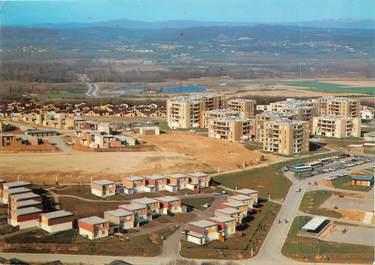 |
|
| Part of the Ville nouvelle Isle d’Abeau under construction |
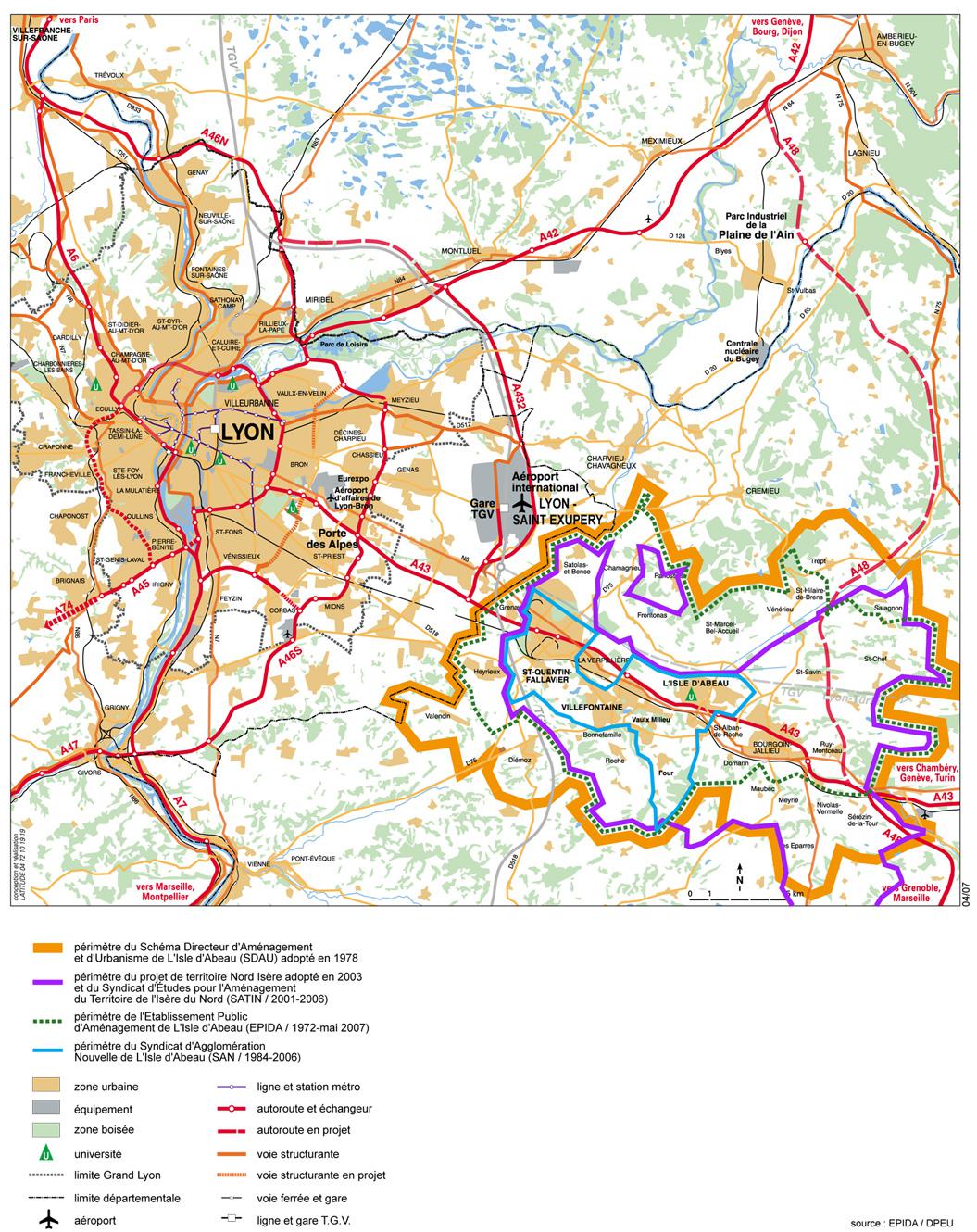
EPIDA delegated day-to-day business to the SANIDA (sometimes shortened to SAN) – the Syndicat d’agglomération Nouvelle de l’Isle d’Abeau, which developed the site from 1984 until 2005.
At the beginning of the story, 21 communes
were to become integrated
into the new town. But as a result of the Loi Rocard in 1983, 16
withdrew, leaving just – in order of size – Villefontaine, L’Isle
d’Abeau, St Quentin Fallavier, Vaulx-Milieu and Four.
To all intents and purposes, the Ville Nouvelle became an ordinary
“communauté” in 2007 when the SANIDA became the CAPI (Communauté
d’agglomération Porte d’Isère), which exists today. The EPIDA soldiered
on until 2009, when it became the EPANI (Etablissement Public
d’Aménagement du Nord-Isère), before ceasing all activity on 31/12/2011
and handing over residual responsibilities to the CAPI.
So what of the buses? Firstly, here are some population statistics to
show what the potential passenger numbers were. We must also bear
in mind that the SNCF only opened their Isle d’Abeau
station on the Grenoble – Lyon line in 1985.
Date Ville
Nouvelle
Villefontaine Isle d’Abeau
1968
4.243
452
75
1975
7.888
1.694
897
1978
entry into service of Bus
Express
1982
17.428
9.719
1.290
1990
29.588
16.171
5.554
2006
42.952
18.407
13.430 (2003)
2012
43.485
18.890 (2015) 16.282 (2015)
The first step was taken in December 1973. EPIDA introduced a
Villefontaine – La Verpillière service, subsequently extended in
November 1975 to Chesnes and St. Quentin Fallavier. A little
earlier, in October 1975 a proposition was drawn up and put forward for
inclusion in the Plan Départemental des Transports.
This had two
routes:-
- A suburban route would run from Villefontaine to Satolas
(now St.
Exupéry) airport, initially 3 times daily Mondays to Saturdays at
7h, 8h, 19h operated by Cars Ricou
- The existing urban route Villefontaine – La Verpillière – St
Quentin
Fallavier (authorised on 11 April 1974), would be operated by Cars
Faure.
A sample of the proposed fares – single
1,40F (4,20 F for suburban
Satolas); monthly season 28,00F (60,00 F for Satolas).
There was no surprise as to the bus companies operating – they were the
only ones who had submitted a bid!
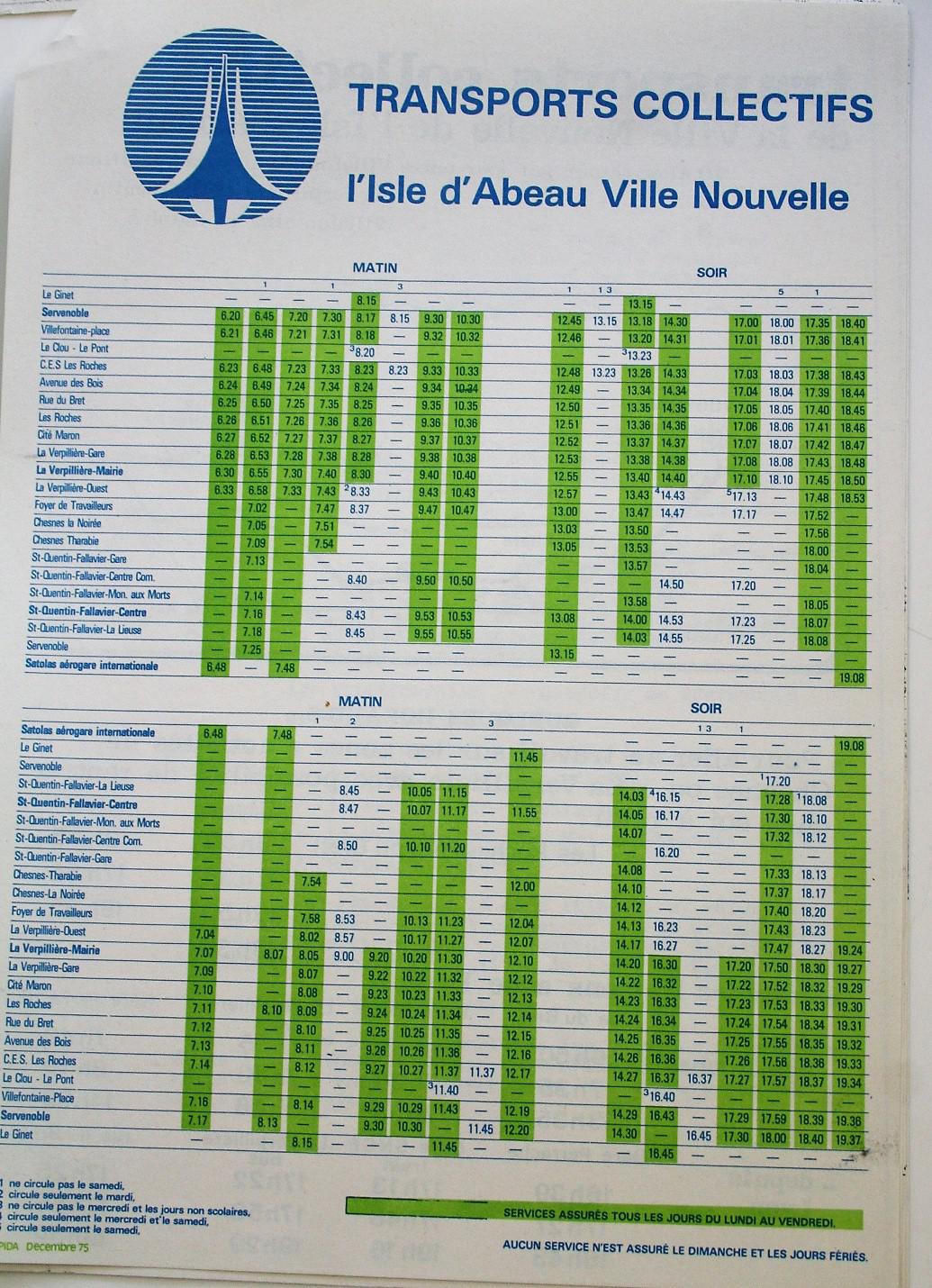
The combined route timetable in December 1975
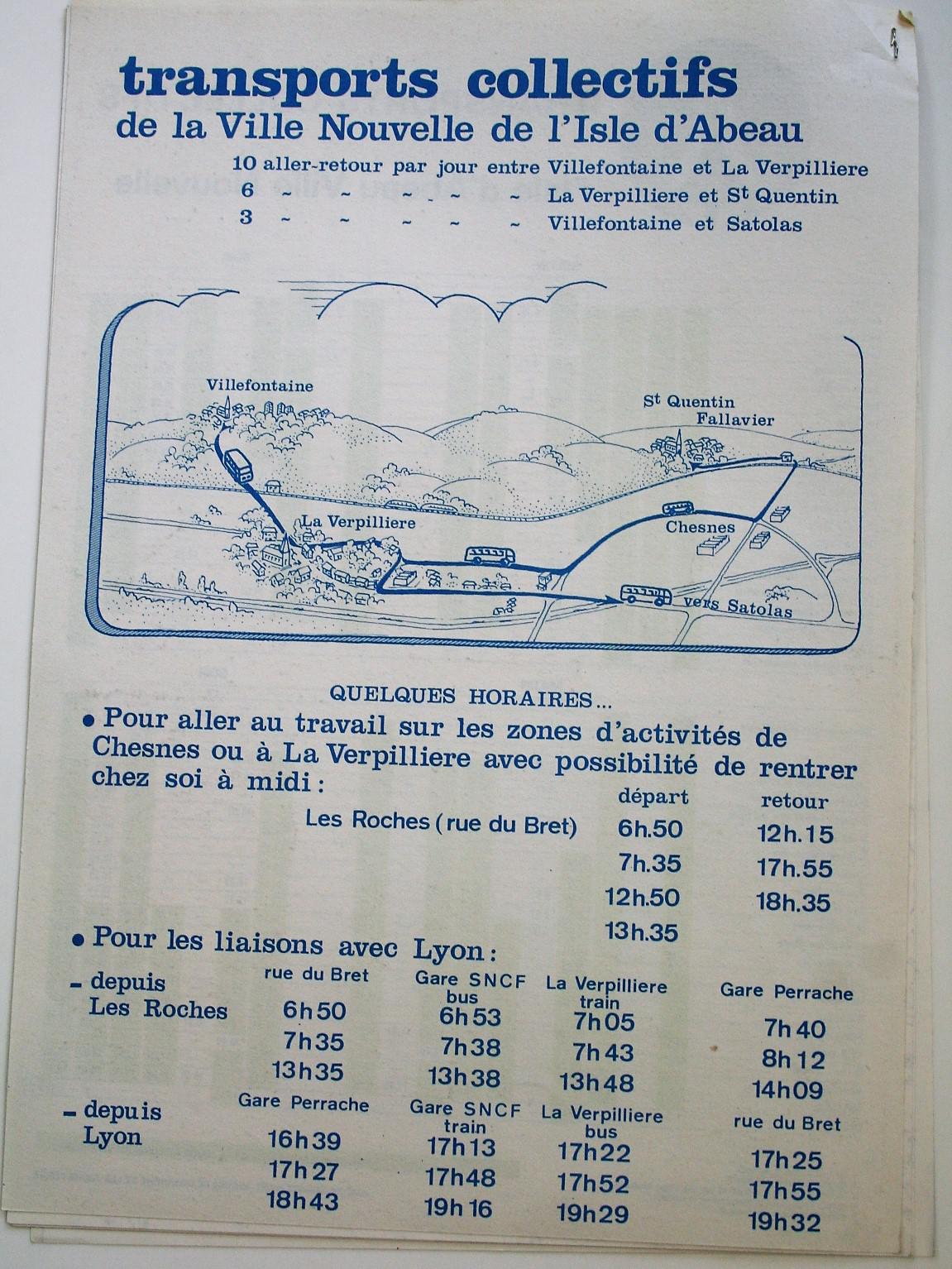
By 1976, EPIDA had transferred responsibility for transport to SANIDA,
who had slightly different ideas. Faure took over the airport service
(later transferred to TRANSIDA).
SANIDA asked for new bids in July 1976, for routes or frequencies they
hoped to be operational by the beginning of 1977. They wanted the urban
route to run 5,300 kms per month. They wanted the Satolas service to
offer 4,400 kms per month. And they wanted a new route from the New
Town to Lyon. To be called Bus Express, it would have its terminus at
the Gare des Brotteaux, and offer 8 returns Monday to Friday, 4 on
Saturdays, with no Sunday service.
They had carried out a survey on how many actively employed inhabitants
were interested in a Lyon commuter service. The answer was 60% overall,
with the following breakdown:
St Quentin 59% 102 out of 172 polled
La Verpillière 50% 44 out of 87
Villefontaine 71% 72 out of 101
The (GIE) SARLTransida (RCS 998 318 612) was set up on 11 Feb
1976, partly to federate the operators who ran routes along the
proposed Villefontaine corridor, but also essentially because the EPIDA
wanted a single company to negotiate with. Nine operators each held
equal shares – 25 each of 100F for a total capital of 22,500F. They
were :
SA Vienne Voyages, rue Victor Hugo, 38 Vienne
Henri Annequin – Cars Annequin *
SA Cars Berthelet *
SA Cars Philibert *
SA Cars Dubois, avenue Pravaz, 38 Pont de Beauvoisin
SARL Cars Dauphinois, 38 La Tour du Pin
Regie VFD *
SARL Cars Faure *
SA CEA Autocars Ricou, rue de la Folie Méricourt, 75011 Paris
(Purchased by Cars Faure in 1978)
* Still exist in 2018
The first gérants were Raymond Faure and Jean Alberti.
Transida managed the allocation of routes amongst its members.
As such, it was a non-profit making company, distributing the net
profits to its members:
‘000 F Turnover
Net profit staff
2004 2.714
0
2
2005 3.119
0 2
2006 3.062
0
2007 3.082
0
2008 3.088
0
SANIDA becomes CAPI
2009 932
0
2010 955
0
2011 935
1
2012 972
0
End of the EPANI
2013 0
(4)
Michel Annequin managed the business from 2005 to 2014, when it was wound up, with Raymond Faure as the liquidator.
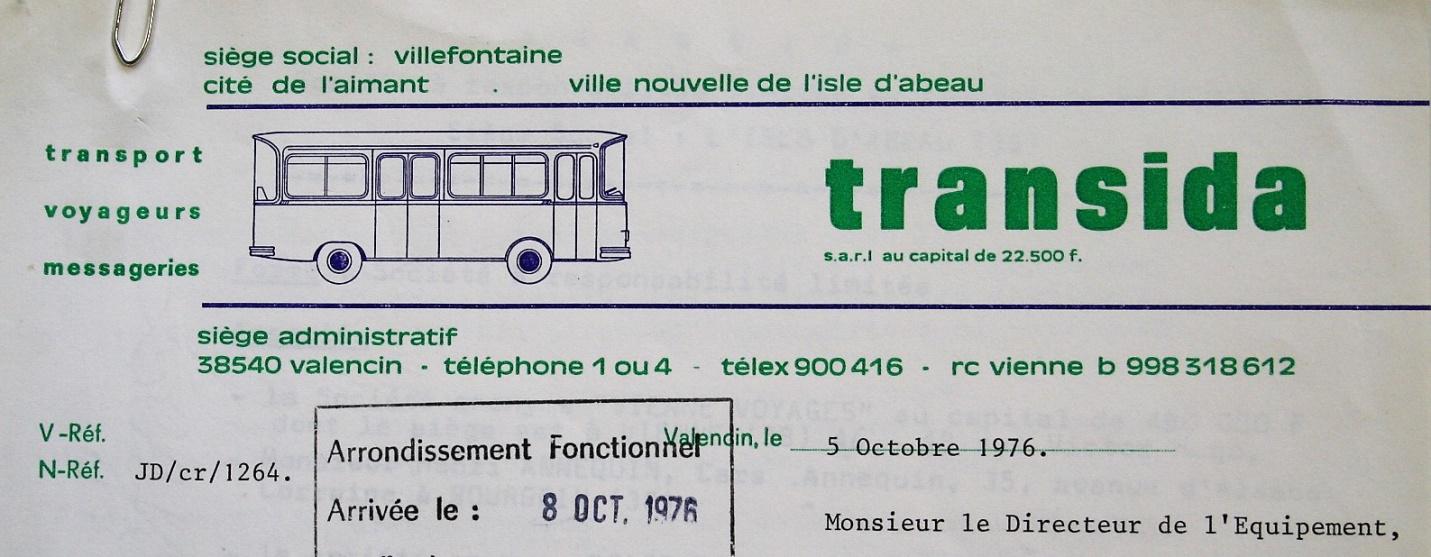
Transida notepaper. The administrative address is that of Cars
Faure
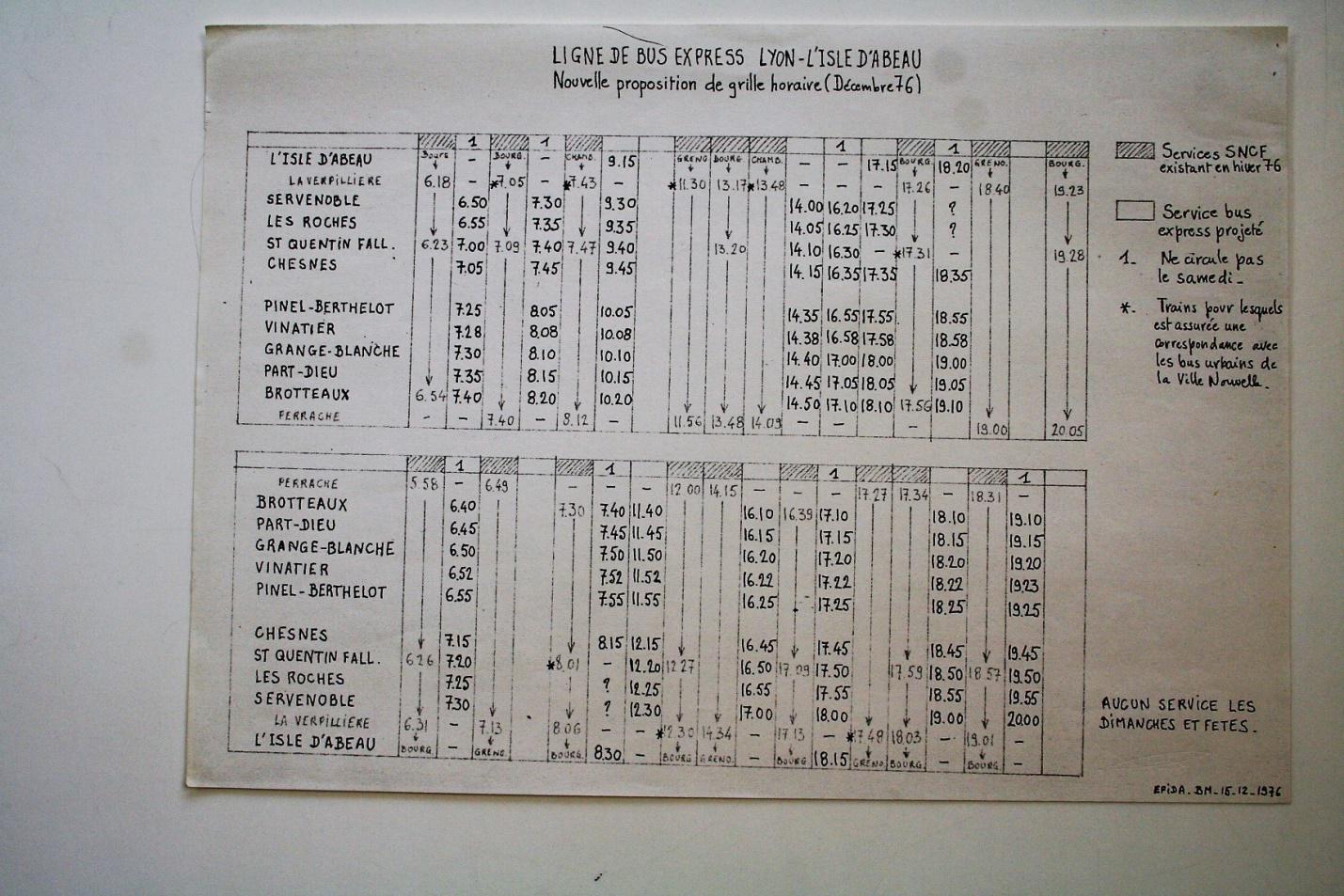
In October 1976 things were moving. A Setra S80E proposed for the urban
route was already in service, an S53 for Satolas was in service, and
two 50 seat Berliet PR14 were on order for Transida to operate to Lyon.
An operating cost assessment placed the S80E at 0.94F HT per km; the
S53 at 1.02F, and the PR14 at 1.15F.
In was only on 17 March 1978 that the Bus Express provisional agreement
came through, valid 2 years, for Villefontaine to Lyon. There would be
7 returns Monday to Friday and 3 on Saturdays. The fare must not be
less than an equivalent second class SNCF ticket less 10%. EPIDA gave
TRANSIDA a guarantee of minimum revenue.
The inaugural journey took place on 09/06/78.
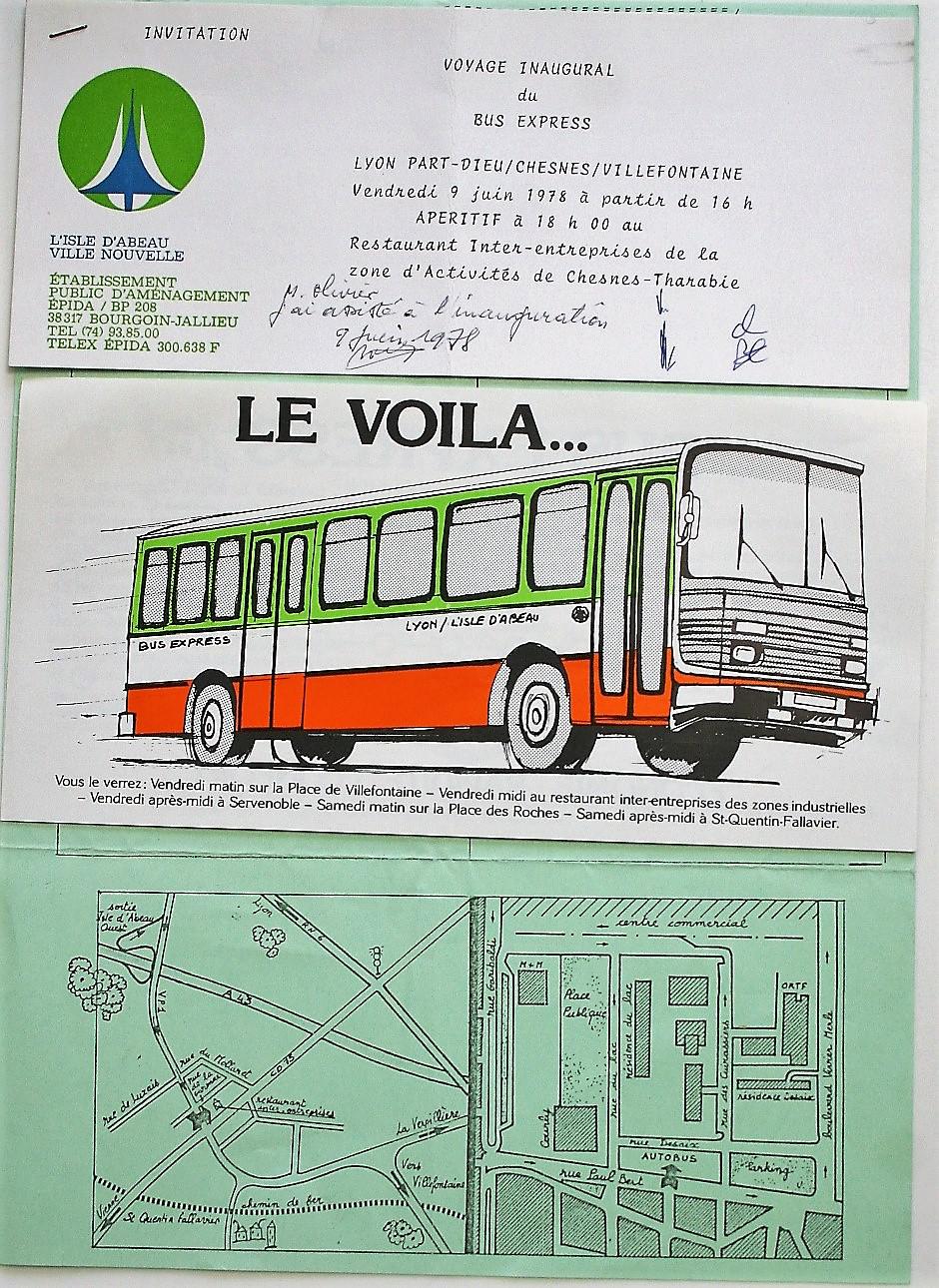
An invitation to the inaugural journey
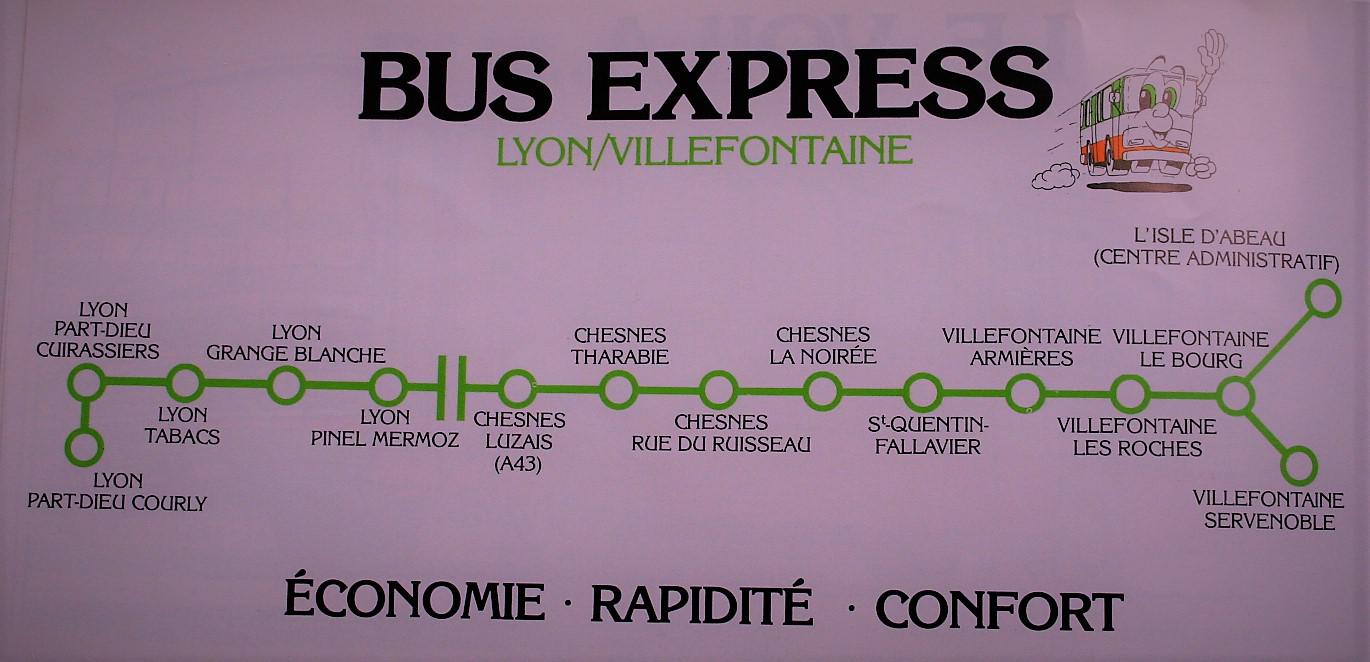
The route map
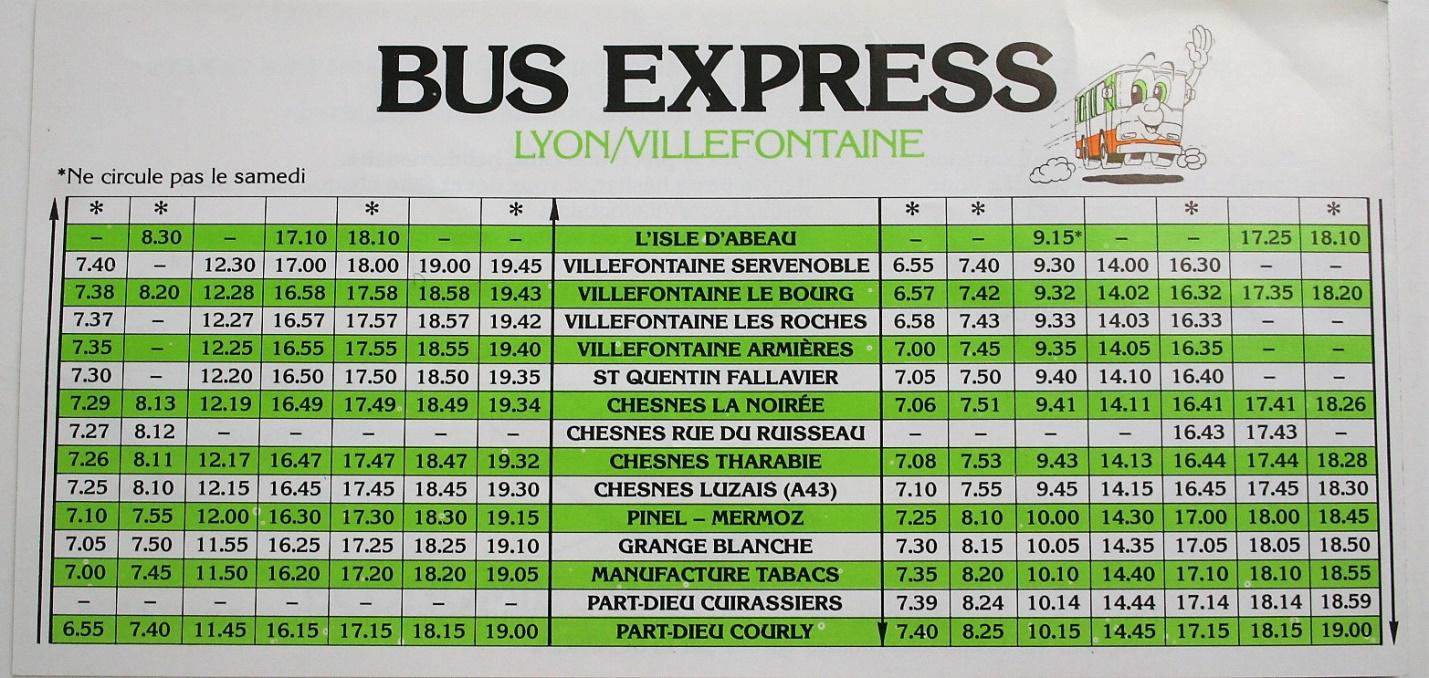
An 8th journey was added on 01 April 1979. After 1 year, there was a
60% occupancy rate. From 01/01/80 duplicates were put on at peak hours,
and a proposal in June 1980 to increase service frequencies would
require a third vehicle.
Then the statistics arrived. In 1976, the two existing routes ran
112,500 kms, had income of 118,000 F but cost 472,000 F – a deficit of
354,000 F.
And in 1978, planners published their “dream network” for 1982 - two
sub-centres, Bourgoin & Villefontaine – each with about 30,000
inhabitants, each requiring 3 routes and 9 to 12 vehicles – km to be
run 320,000 at Villefontaine and 610 000 at Bourgoin.
An interconnecting route between the two centres would require 3
vehicles and run 170,000 kms annually. This never happened for 1982,
but was a fair reflection of bus services at the end of the 90s.
Bus Express was going to require an extension of its authorization in
1980. This involved 4 authorities - Prefecture of the Isère
(original authorization 24/08/76), CTD Isère and Rhône (20/01/77), and
the Ministry of Transport. On 04/12/1980 renewal was sanctioned for 2
years to 31/12/1982.
There were negotiations as to the possibility of VFD participating in
this service – the VFD Roybon to Lyon route covered the same ground.
Nothing came of this.
In the month of October 1979, Bus Express carried 10,000 passengers
(60% season tickets). The average occupancy rate was 23 passengers per
journey, with a peak of 56 on the 06.50 Villefontaine departure.
Expected 1979 year end figures were – 80,000 passengers, 705,000 F
expenses, 380,000 F receipts, 325,000 F deficit.
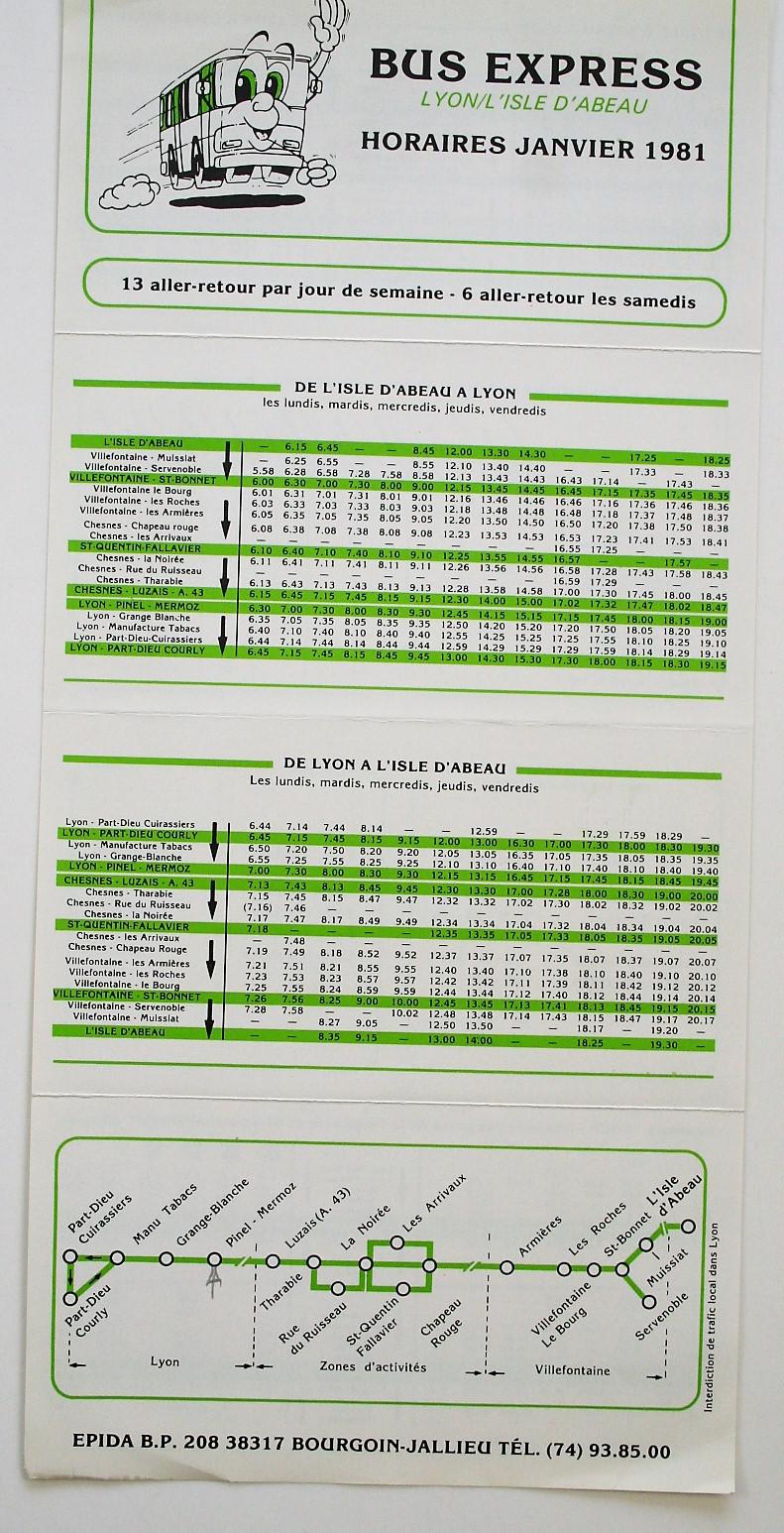
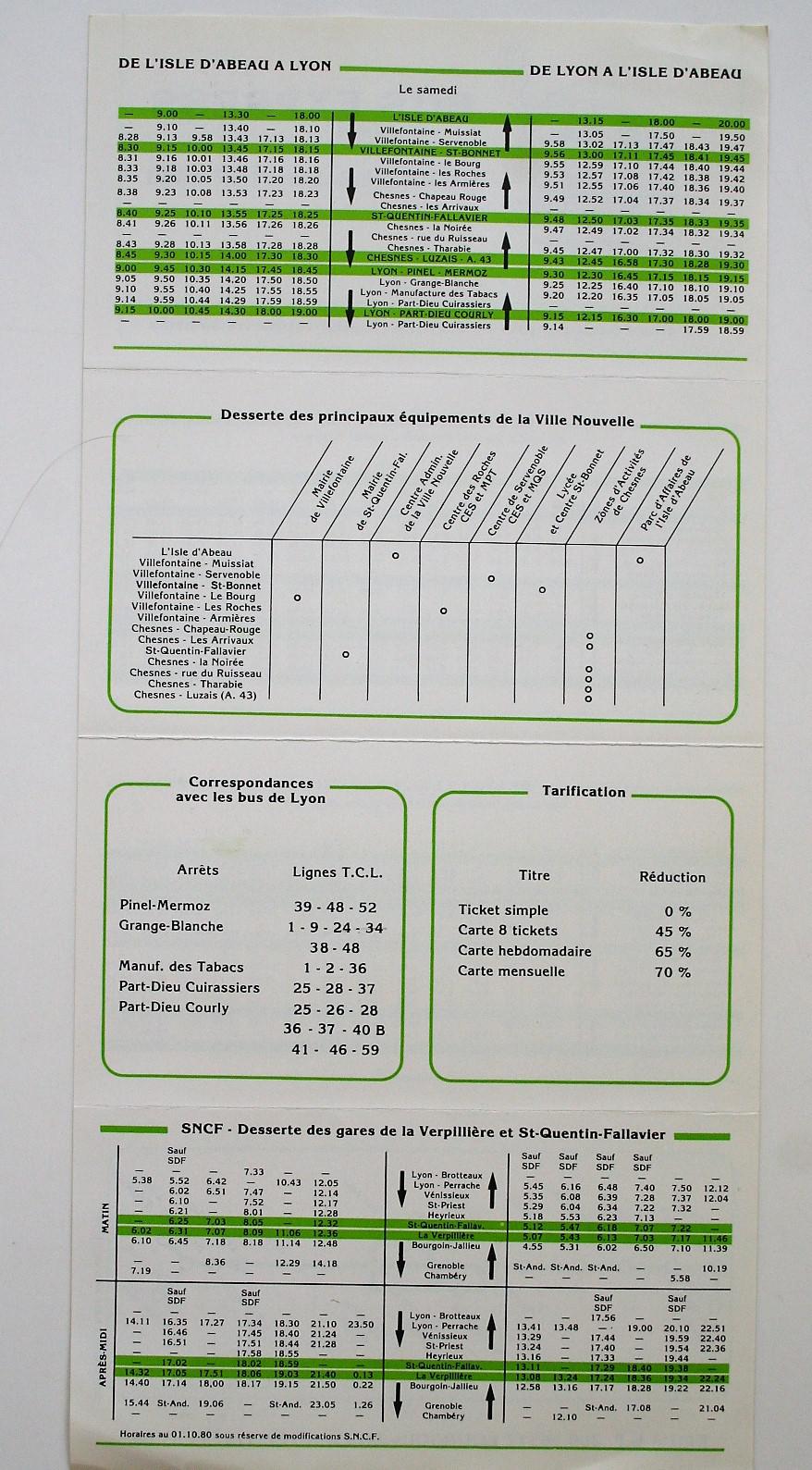
The 1981 Timetable
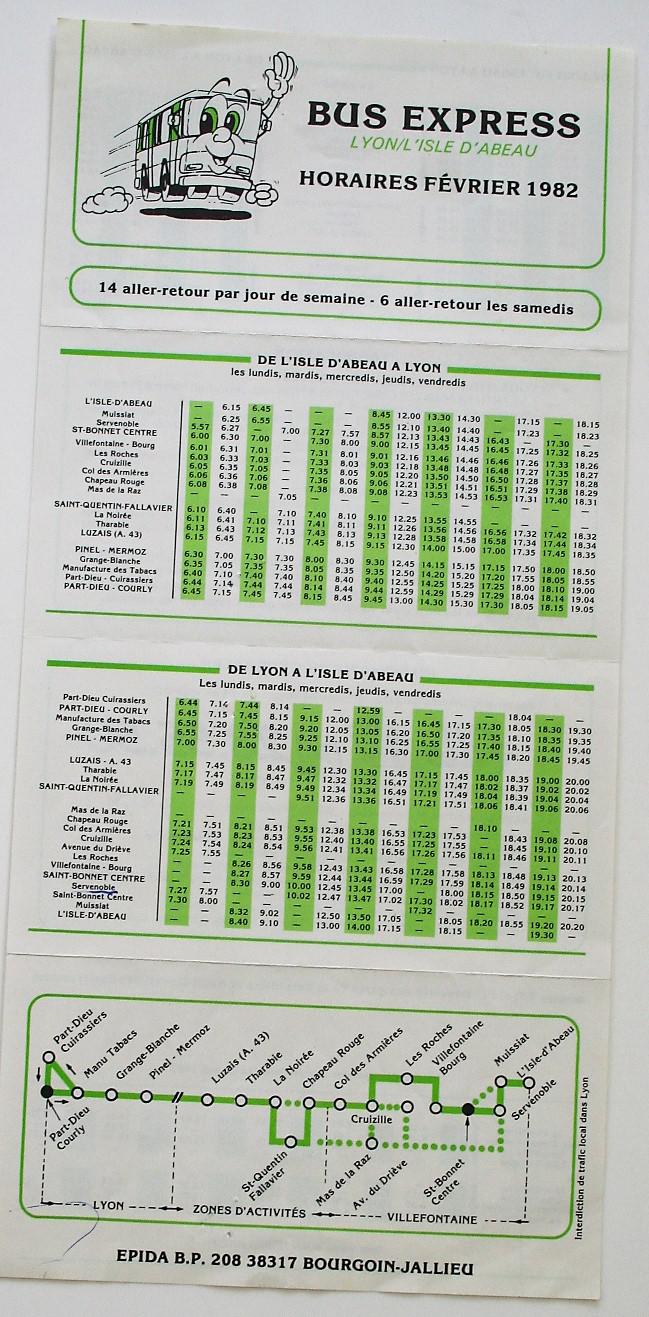
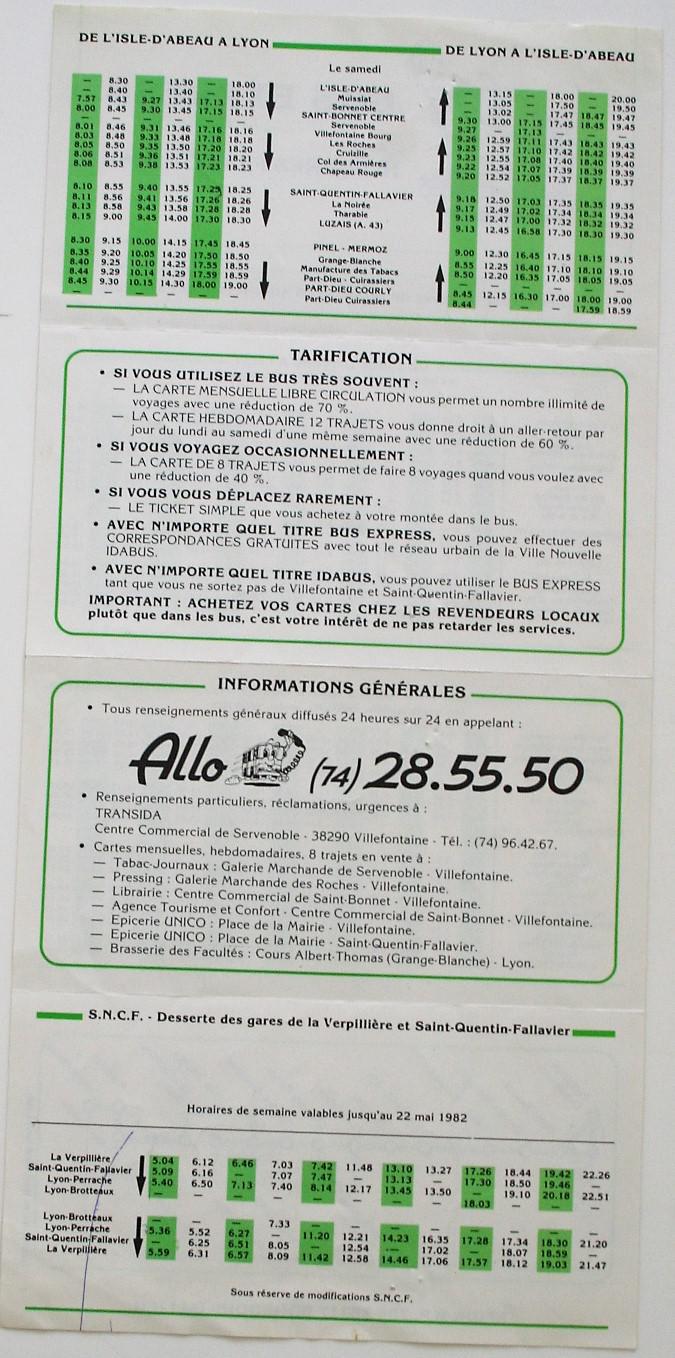
The request to the Prefectures of Isère and Rhône, made on 19/05/82,
for an extension to 31/12/84, must have been accepted.
Three generations of vehicles:
1987
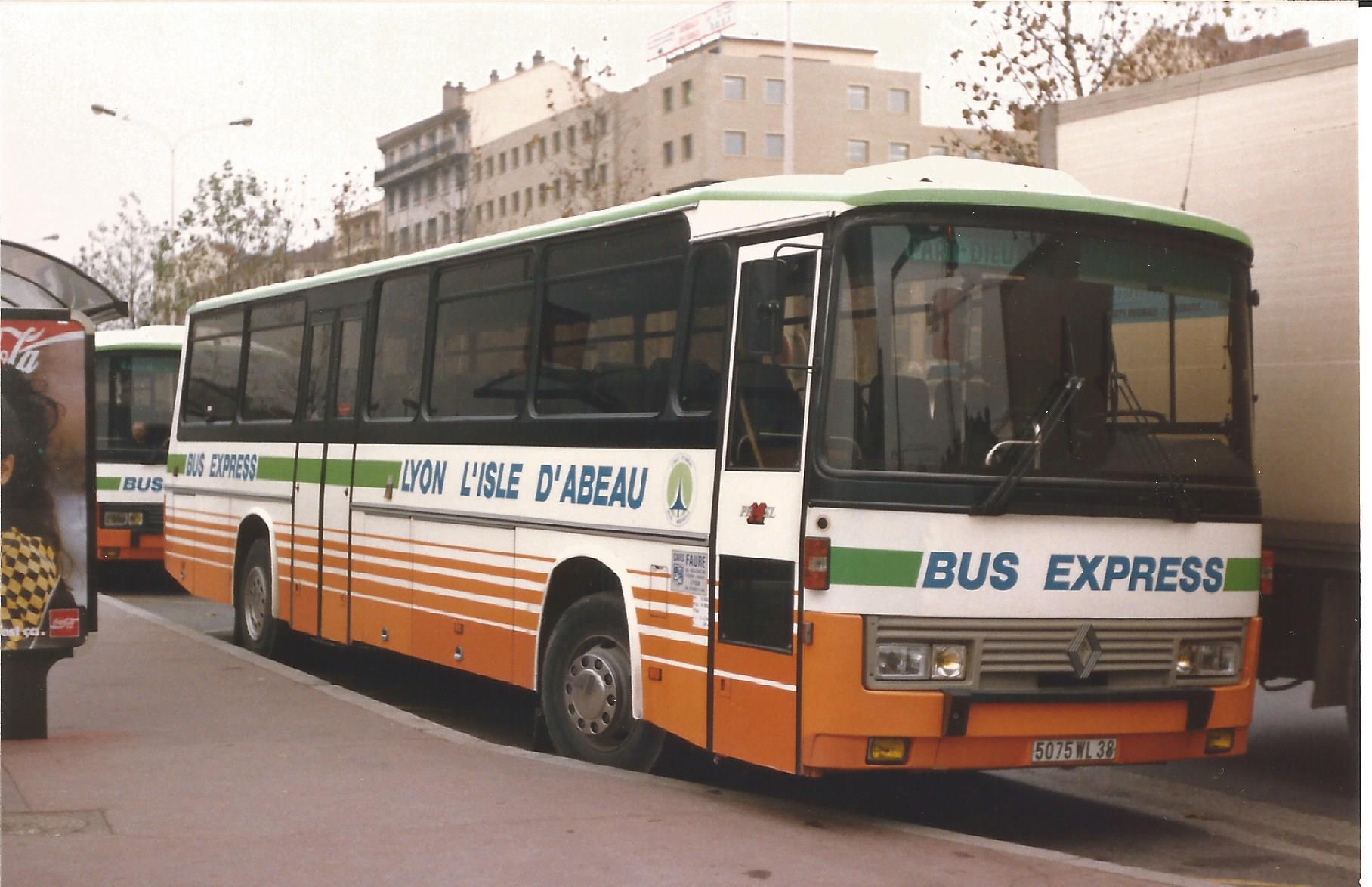
Cars Faure PR 14SL 5075WL 38 in Bus Express livery
1994
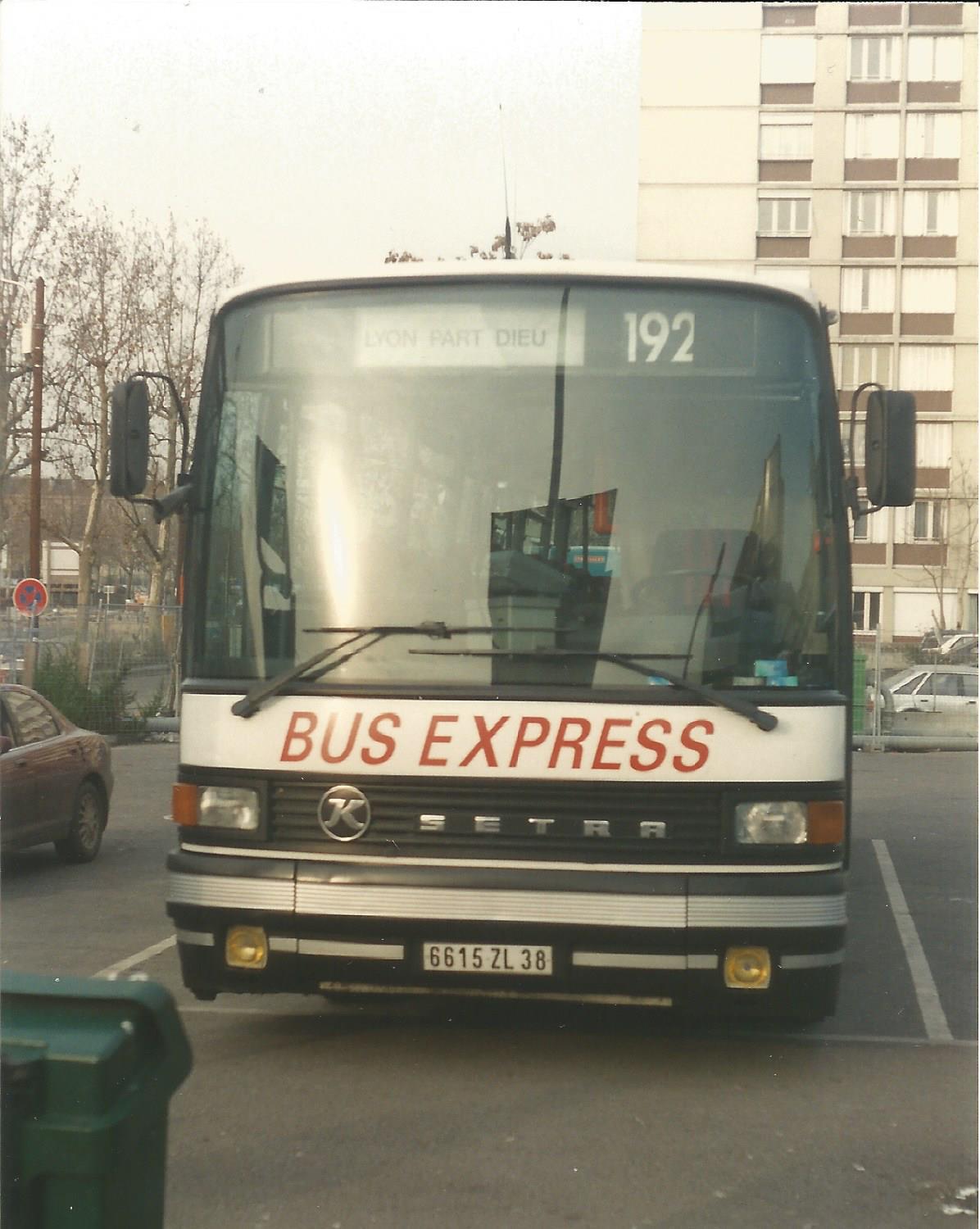
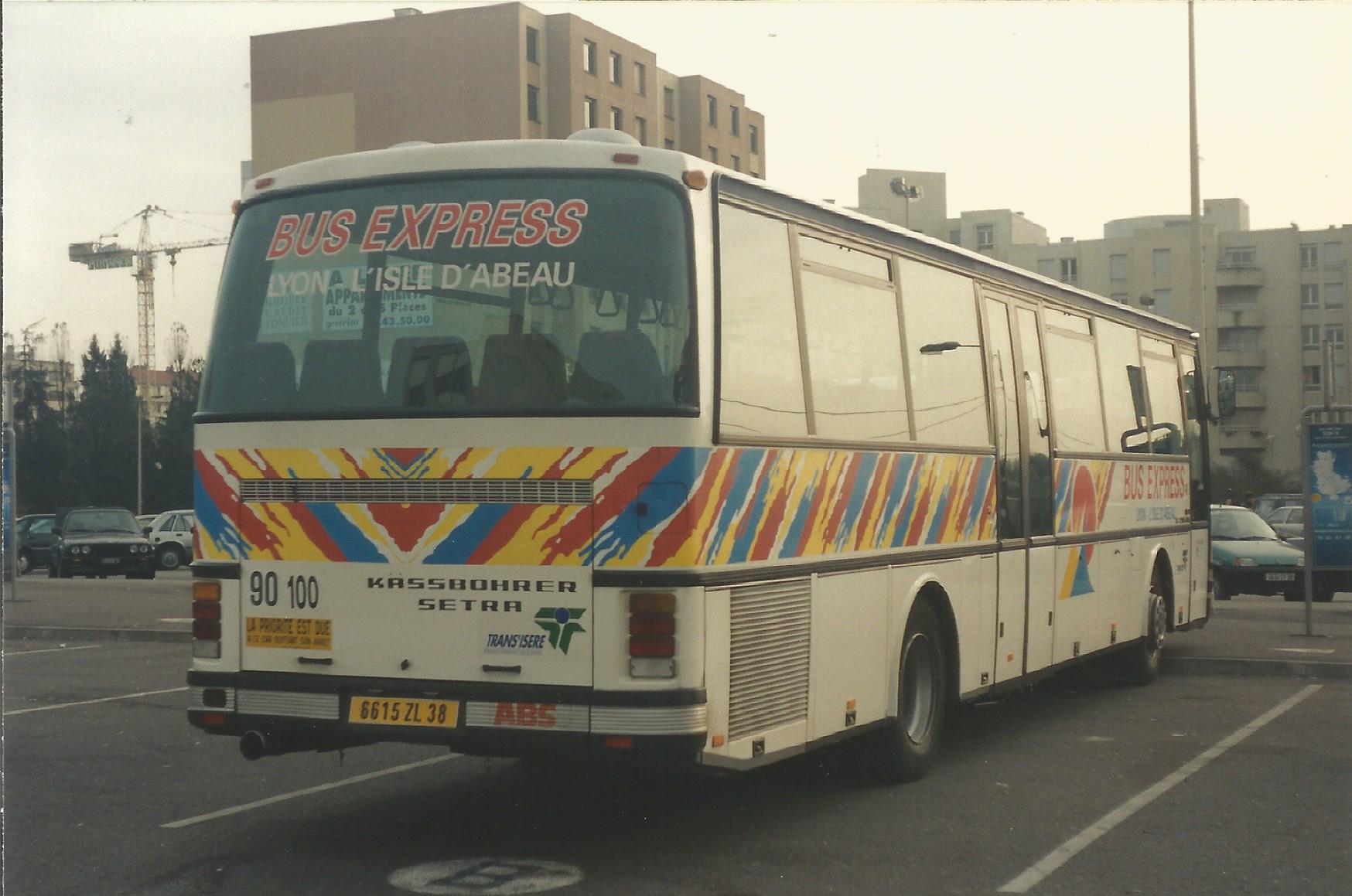
Cars Faure Setra S215 6615ZL38
2001
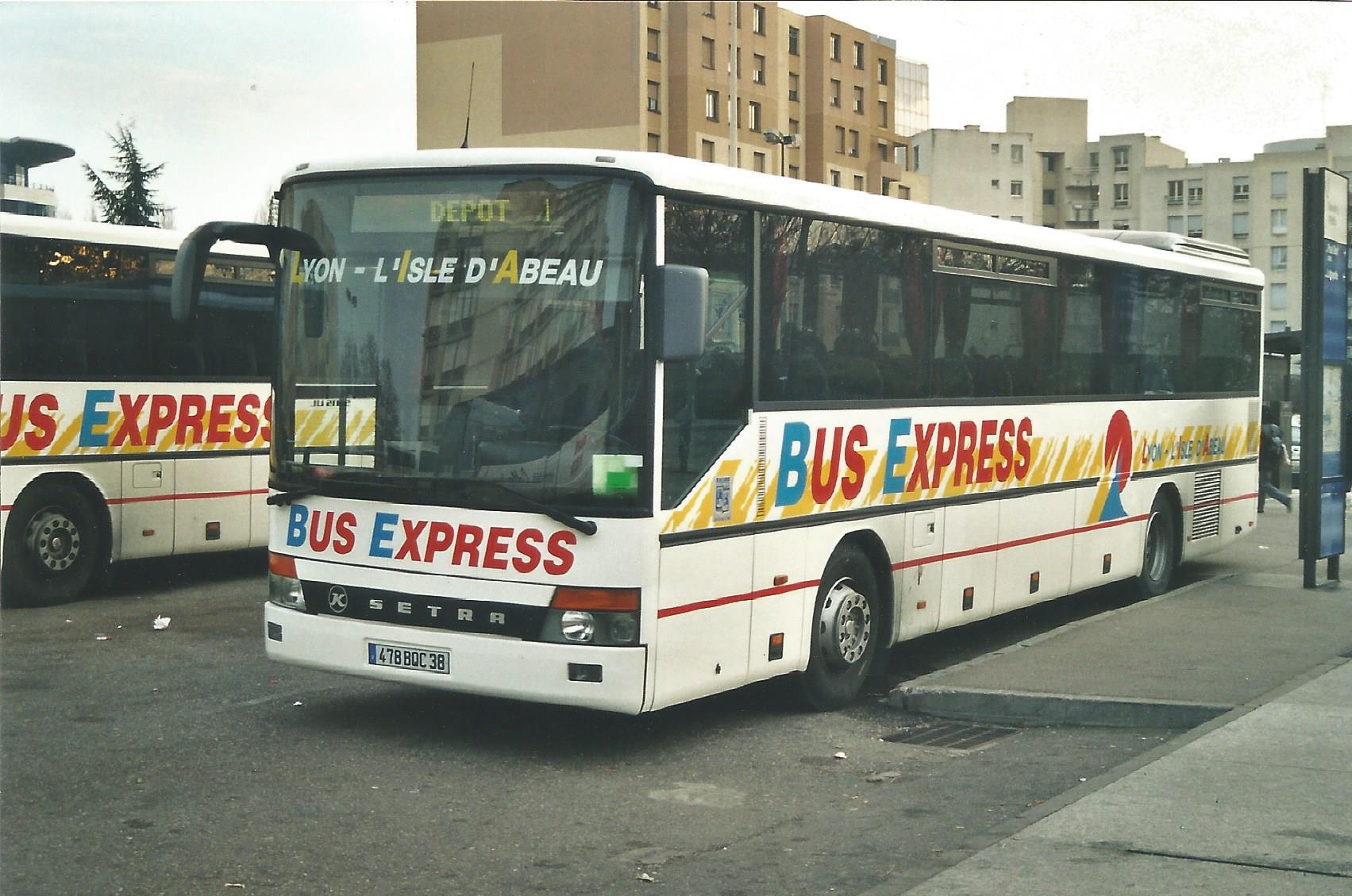
The modern administrative history of the route is as follows:
Still operated by Cars Faure, it became 192 in the Isère Department
series (see 1994 photo), then, at a date I am not sure of, route 1920
in the new Isère route numbering system. Some journeys were extended to
Bourgoin. In 2012, Car Postal France won the route tender, in
circumstances that led to a court case (but that is another story).
That date coincides with the liquidation of Transida, which no longer
had a useful function. Car Postal currently operates the route as the
1920/1930/1940 Bourgoin/Isle d’Abeau/Villefontaine to Lyon La Villette.
| DORSET (RURAL) | DORSET (URBAN) | SOMERSET | WILTSHIRE | HAMPSHIRE |
| FAROE ISLANDS | FRANCE (NATIONAL) | FRANCE (REGIONAL) | ISLE OF SKYE | LINCOLNSHIRE |